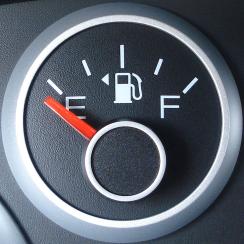
- By: News
- 0 comment
- South Africa’s fuel price has never been higher.
- If you’re going to be paying more at the pump, you may as well sign up for a fuel reward programme.
- But how much value each delivers depends on several factors, including membership fees, cash back, and number of filling stations.
- When it comes to banking partner, there’s still one clear winner who offers more than R7 cash back – but you’ll need to study the terms and conditions and tick all their boxes to realise these maximum benefits.
- If you prefer to keep it simple, and avoid monthly membership fees, Shell’s in-house programme still offers the simplest option with the best returns.
- And new offerings from Capitec and Nedbank are also simple, cheap, and attractive.
- For more stories, go to www.BusinessInsider.co.za.
The fuel price in South Africa is on the rise once again, and with more people back on the roads after a coronavirus hiatus, savings at the petrol pump is all the more important.
In a normal year South Africans spend around R14.76 billion per month on fuel. As a result, many of the country’s most popular reward and loyalty programmes have a strong fuel component.
Most of these reward programmes are locked in to certain card issuers and filling stations, with the notable exception of Shell, who is now going at it alone after what gave every appearance of a falling-out with Clicks. As a result, the programmes vary greatly in their requirements and payouts, and a direct comparison is difficult.
If its simplicity you’re after, then the non-banking companies like Dis-Chem, Clicks, Pick n Pay, and Shell offer relatively easy-to-follow, flat-rate, cash-back systems. These give you between 10c and 15c back in points for every litre of fuel you buy. These programmes are free to join, and have no monthly membership fees.
If you’re an existing banking or insurance client, then you’re likely already paying for – and loyal to – a far more complex fuel reward programme.
Banks Capitec and Nedbank have launched flat-rate systems that are simple and fairly generous. Although you’ll need an applicable account with each bank, they now offer flat-rate discounts of 20c and 25c per litre respectively.
Other banking and insurance partners offer more complex rewards that scale based on your tier, and they generally have either a monthly membership or card-administration fee to pay. The tradeoff is better returns, provided you know how to work the system and climb the tiers. In most cases, credit card holders receive greater returns for filling up than debit or cheque card holders, but these accounts also generally attract higher monthly fees.
Thanks to bold marketing from banks and insurers, with claims like “Up to 50% off”, it may therefore feel as if you’re receiving greater fuel rewards than you really are after you deduct the higher fees and take maximum spend limits into account.
The winners
When it comes to picking a free, non-banking fuel rewards partner, the Shell V+ programme still comes out best, with an offer of 15c per litre, or 5c more than their direct competitors.
With only 5c in the game, however, your decision in this instance may rather come down to which filling stations are most convenient to you – and how wide the partner filling station network is in South Africa. Engen, who is affiliated to Clicks, comfortably has the biggest branch network in the country.
These cards are free to use, so there’s nothing stopping you from having more than one of these cards at any one time.
On the banking and insurance side, Discovery Insure still offers the greatest return – provided you play along with their various tiers and behaviour tracking. Their dual partnership with BP and Shell also gives them the lead in the number of eligible filling stations members can use. But the barrier to entry is steep: only those with a Discovery Insure vehicle insurance policy can join. And you’ll need to be something of a genius to fully understand the various tiers and terms and conditions to maximise rewards in this programme.
FNB members who closely follow the eBucks terms and conditions can bank up to a maximum of R8 back per litre of fuel – however, according to the eBucks terms and conditions, this reward only applies once a quarter, and depends on clients meeting several additional qualifying conditions, such as 100% of member fuel spend being at Engen for the quarter, and having a vehicle finance agreement with one of three specified providers.
The two offerings from Nedbank and Capitec are also appealing for their simplicity, flat rates, and high returns – although both only allow use of filling stations with smaller networks.
Existing banking clients will likely stick with their bank’s offering and swipe without much consideration. And those who don’t have a fuel rewards programme built into their banking fees may well look towards which filling stations brands are most convenient to their location – or carry multiple cards in case they get caught short and are in need of a top up at a different provider.
SOURCE:



